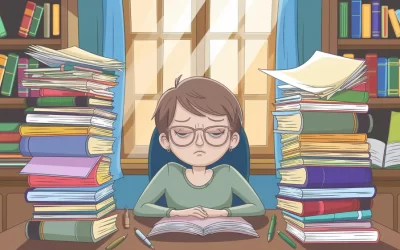On March 1, 2019, ISMTE held a meeting hosted by Research Square in Durham, NC, led by Cary Moskovitz speaking on the topic, “Text Recycling and Self-Plagiarism: Findings from an NSF-Sponsored Study and Implications for Journal Offices.” Moskovitz, a member of the Thompson Writing program at Duke University, shared data gathered from the five-year study highlighting the complexities of text recycling and plagiarism, especially differences in the perceptions of authors, editors, and publishers regarding the topic. Moskovitz posed many thoughtful, global questions about text recycling practices that didn’t have clear answers but did offer suggestions for general approaches and concerns to be aware of when handling papers with notable text overlap.
What is text recycling?
When we hear the term “plagiarism,” readers likely have a pretty good grasp of what that is; stealing someone else’s work or ideas (or even your own!) without proper attribution or credit. So, what is “text recycling” and how is it different from plagiarism? For one, text recycling is a lot harder to describe, but Moskovitz offered multiple definitions. It is reuse of textual material (such as prose, visuals, equations, etc.) from one document in a new document, where:
- The material in the new document is identical to the original source, meaning substantially equivalent in form and context;
- At least one of the authors of the new document is an author of the prior document as well; and
- The material serves the same rhetorical function.
It is important to note the use of the word “document” in this context, as this indicates material meant to be, but not yet published.
This poses some important questions about authorship of multi-author material: Does a single person have ownership of material that comes from a group research project? Or does the research group maintain ownership? If that is the case, does that group ownership remain when membership has changed? What if an author of a previous research project takes some of those findings and publishes them in another paper with different coauthors? In this circumstance, how do you track coauthors’ approval?
Interestingly, Moskovitz stated that text recycling occurs both knowingly and unknowingly. Text recycling most commonly appears in the methods/materials and experimental sections; in fact, he noted that some experts in the STEM field believe it could be of value when a common technique is routinely described across papers. After all, there are only a handful of ways to describe the equipment used, the preparation of the materials, etc.
Text recycling is quite tricky to label as good or bad because there has been so little written about it, and there is no current standard across all fields for how recycling should be properly applied—or whether there even should be a single standard.
The study showed that a survey of STEM experts proved to be equally divided about what is and isn’t ethical surrounding text recycling, though STEM authors tend to feel that a stable research team is one in which all authors share “ownership” of their text.
How should we handle text recycling?
Phase 1 of the grant research included findings about the beliefs and attitudes of authors, editors, and publishers, text analysis of published articles, and the variances of copyright and contract laws. Moskovitz showed numerous studies surveying how authors, editors, and publishers treated text recycling, which varied dramatically across the board. While this once again highlights the need for a uniform standard, a few conclusions were reached:
When evaluating a document for text recycling—and determining whether that falls into the realm of self-plagiarism—the first criterion to note is where the recycling occurs. As stated previously, most STEM experts agree that it’s OK to recycle material in the methods section with some limitations—but material recycled in the introductory or results section is uniformly agreed to be unacceptable, as it indicates the research is not novel.
Another question to ask is what type of document the material is, or what its intended final destination is. For example, conference papers or posters are often considered working drafts to be edited and expanded upon at a later time, thus they are “still on their way” even though they may be published later. Conference proceedings vary drastically among fields for this same reason.
iThenticate reports are widely used to determine the amount of overlap in a document, but Moskovitz warned that they should not determine policy; the software is not developed enough to handle the nuances of text recycling, or it can pick up on simple phrases. As a result, the solution for handling high iThenticate reports is often to send the manuscript back to authors to simply rewrite the material so the software won’t catch it! This resolution merely disguises the material and tricks the software into producing a lower number but doesn’t really change the substance. Publishers and editors should establish thoughtful policies surrounding this critical software and shouldn’t let it be the guiding force in determining what is recycled text.
For authors, how each individual publisher handles plagiarism or text recycling creates inherent complexities; many of the problems, Moskovitz stated, come from assuming that what is true for one contract is true for all. Authors have to compare the contracts between publishers—the original publisher and where they intend to publish the duplicated material—to understand what is legally permitted. In a similar vein, many editors tend to have an inaccurate understanding of copyright and infringement laws, so they simply prefer to send manuscripts back to authors whenever reports show too much overlap. Lastly, there are major differences between U.S. copyright laws and the copyright laws of other countries, leaving authors confused about what is acceptable where. The ultimate solution for these global concerns is to establish thoughtful practices and open the conversation about text recycling across disciplines.
For More Information:
Text Recycling Research Project website: https://sites.duke.edu/project_tr_research_collaboration/
“Self-Plagiarism, Text Recycling, and Science Education”: https://doi.org/10.1093/biosci/biv160
A useful guide for editors: “How to deal with text recycling”: http://media.biomedcentral.com/content/editorial/BMC-text-recycling-editorial_guidelines.pdf
“Exploring Student Self-Plagiarism”: https://files.eric.ed.gov/fulltext/EJ1067540.pdf
“Who owns this text?: plagiarism, authorship, and disciplinary cultures”: https://digitalcommons.usu.edu/cgi/viewcontent.cgi?article=1025&context=usupress_pubs
“Plagiarism in submitted manuscripts: incidence, characteristics and optimization of screening—case study in a major specialty medical journal”: https://researchintegrityjournal.biomedcentral.com/articles/10.1186/s41073-016-0021-8
Important questions to ask authors, editors, and publishers:
– What sort of policies or practices should be implemented regarding the use of iThenticate reports? Does changing the phrasing of sentences effect the novelty of the work?
– What sorts of practices should research groups develop to protect authorship as membership changes? How can a group determine who owns what portions of a project?
– Should publishers agree on a single, uniform approach to handle text recycling/plagiarism across all disciplines, or should each discipline creates its own guidelines? If so, how could these be implemented?




